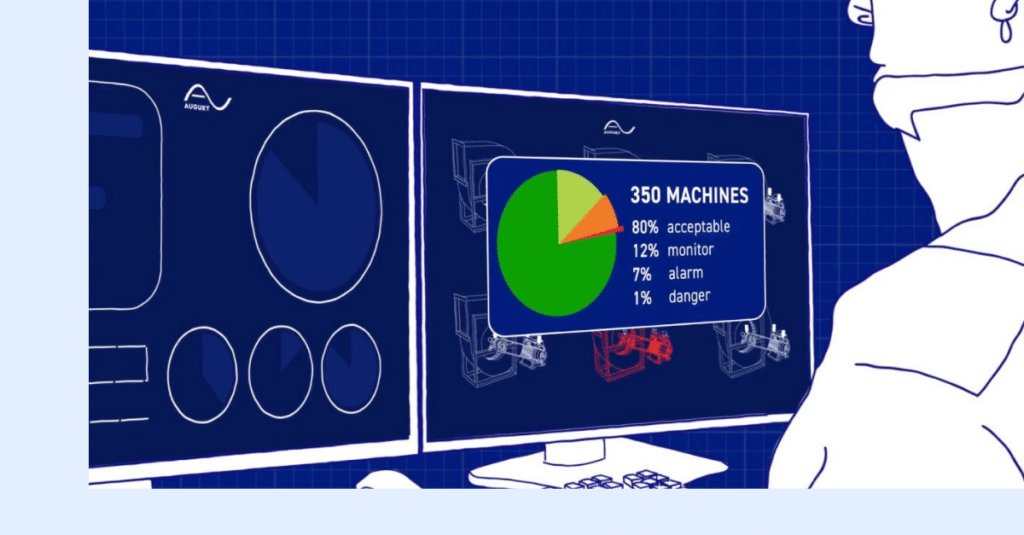
With an effective digital transformation strategy, organizations can transform their production ecosystem into something more insight-driven, streamlined, and responsive to specific customer demands. Digital transformation in manufacturing can provide businesses with a better way to handle supply chain disruptions and give them a considerable competitive advantage.
Since early on in the pandemic, manufacturers have been dealing with supply chain disruptions. Shipment delays and a lack of supplies became the top COVID-19 worries of supply managers in 2021, and 2022 hasn’t done much to allay those concerns.
What first looked like a pandemic-induced hiccup is actually a long-term problem that organizations can no longer hope to wait out. Even if today’s shortages bounce back, manufacturers must be proactive to develop resiliency over the shortages to come. Implementing a strong digital transformation strategy will provide organizations with the control they need, both over their manufacturing operations and over their supply chains.
This type of transformation is not an easy fix. You’ll need people willing to shake up existing structures and employees ready to learn new skills and face new challenges. It will require a willingness to take a completely new approach to operations to truly bring manufacturing into the digital age. But by the end, you will have a company that is not only ahead of the pack, but also ready for whatever bumps in the road may come next.
How to Ensure Your Digital Transformation Strategy Will Produce a Competitive Advantage
Digital transformation in manufacturing has the power to significantly improve efficiency, giving you the edge over the competition. However, not every transformation is a success. While organizations that hit their transformation ROI goals surpassed those goals by an average of 50%, there were also many who failed to hit the mark, underperforming by an average of 30%. With that in mind, here are three strategies to help you overcome the challenges of digital transformation in manufacturing and, ultimately, reap its rewards.
1) Use Remote Management to Make Space for Major Strategic Initiatives
With fewer people on-site than ever, now is the time to switch to a machine health monitoring platform with a robust suite of remote management tools. Not only will this enable smarter predictive maintenance, but it will also free up a notable amount of your managers’ time. This will allow them to focus instead on important issues such as deployment and root cause analysis. It will also make it possible for them to plan out and enact innovative manufacturing initiatives designed to address deeper, portfolio-level problems rather than spending all their time on routine maintenance issues.
2) Prepare Your Employees for the Digital Future
One of the major challenges of digital transformation in manufacturing is making sure reliability and maintenance teams have the skills necessary to excel in a more modern environment — there’s simply not enough time in the day with all the routine (and often unnecessary) maintenance. Luckily, AI-driven machine health monitoring doesn’t just free up management’s time — it also lightens the load of employees and technicians, providing them with enough time necessary to focus on higher-level work.
At Augury, we’ve seen this firsthand. Companies that implemented our machine health platform saw employees across plants able to quickly start learning the precision maintenance skills necessary for their new roles while also advancing to a higher level of collaboration between operation and maintenance. Many employees even have enough time to be trained in new capabilities off-site, bringing new expertise to the manufacturing floor and strengthening their company’s digital transformation strategy.
3) Create a Culture of Collaboration and Accountability Around Machine Health
To effectively implement a digital transformation strategy, you need to get your whole staff on board. Collaboration between floor workers, technicians, reliability experts, and management is crucial if you’re serious about creating an efficient and productive business. Luckily, modern machine health monitoring platforms make cross-departmental communication easy. Even better, collaboration through this platform is built on a foundation of AI-driven insights, prioritizing verifiable facts over personal opinions.
Regular conversations around machine health should be encouraged and records of these communications captured and kept within the platform. This will provide you with a clear chain of accountability and build up a database of AI-backed insights from an ever-growing record of machine performance. These insights will inform future decisions and can be used to improve operations on both the site and portfolio levels.
It’s not certain that supply chains will ever get back to where they were pre-pandemic. Instead, it’s time to embrace innovative manufacturing strategies and digital transformation. This can increase the resiliency of your operations, allowing you to optimize production lines, increase output, and put you firmly ahead of the competition.
Interested in seeing how digital transformation can accelerate your growth? Reach out to Augury today.




